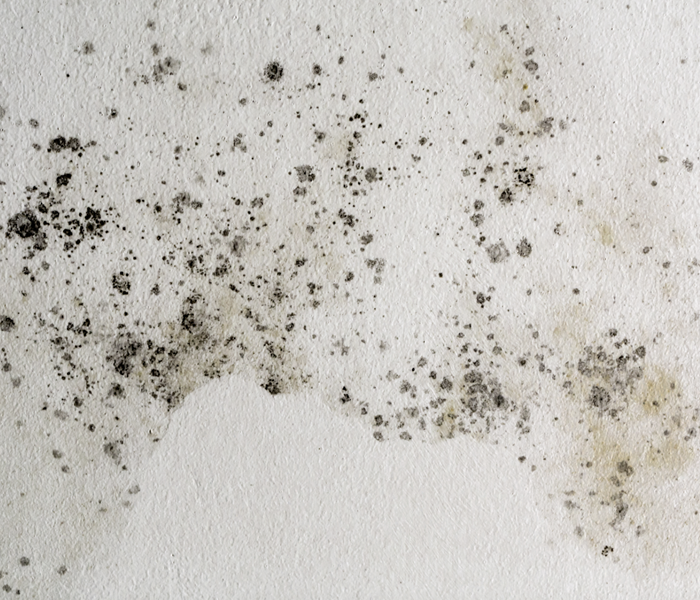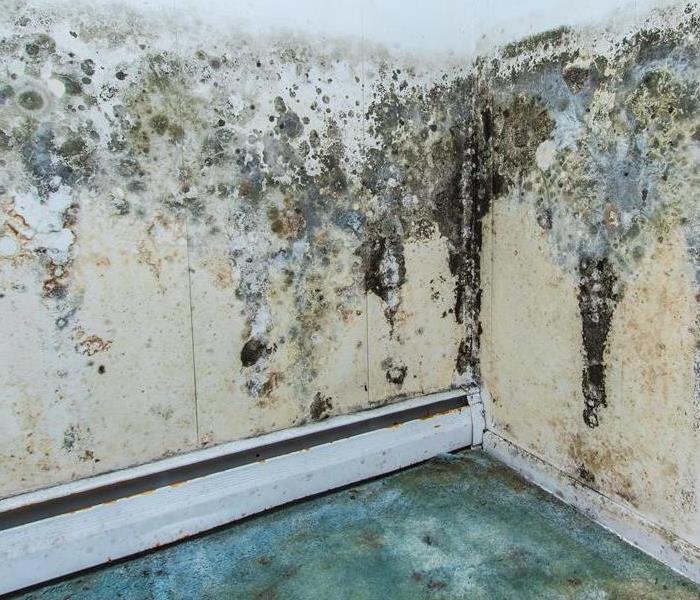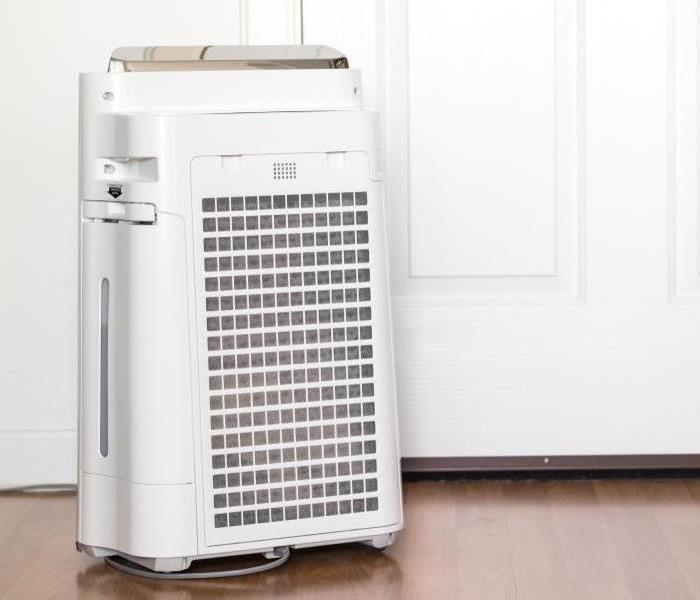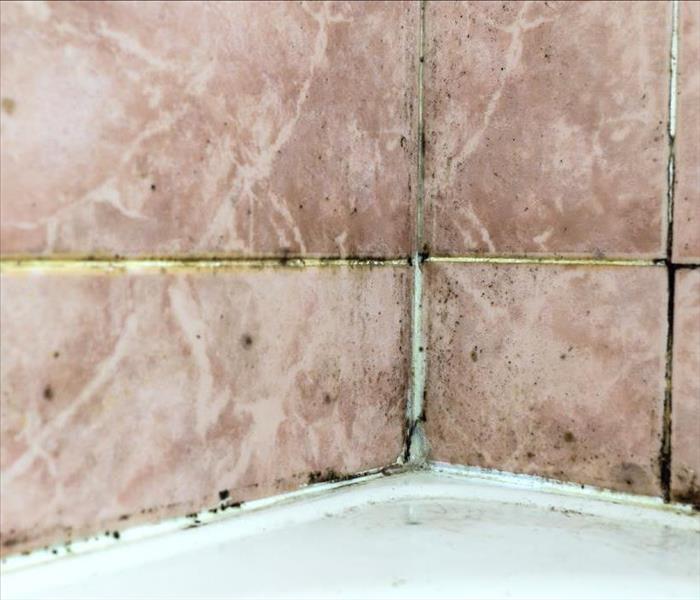Archived Mold Remediation Blog Posts
Top 4 Hidden Places Where Mold Can Be Found
10/31/2023 (Permalink)
 Be proactive. Be aware of where mold could potentially grow.
Be proactive. Be aware of where mold could potentially grow.
Mold growth can be a concerning issue in our homes, and it often lurks in hidden places that go unnoticed. In this blog, we will explore the top four hidden places where mold can be found. By identifying these areas, you can take proactive steps to prevent mold growth and maintain a healthy living environment.
Behind Wallpaper and Wall Coverings
Behind wallpaper or wall coverings can be a prime location for mold to thrive. Moisture from leaks or excessive humidity can seep into the walls, providing the necessary conditions for mold growth. To check for mold in these hidden areas, carefully inspect any peeling or bubbling wallpaper, as well as discolored patches. If you suspect mold, it is crucial to address the source of moisture and remove the affected wallpaper or wall coverings to prevent further mold growth.
Crawl Spaces and Attics
Crawl spaces and attics are often overlooked areas, making them ideal environments for mold to flourish. Poor ventilation, coupled with high humidity levels, can create a perfect breeding ground for mold growth. It is essential to periodically inspect these spaces for any signs of mold, including musty odors, discoloration on the surfaces, or dampness. Regularly checking and maintaining proper ventilation, insulation, and moisture control in crawl spaces and attics can help prevent mold growth.
Inside HVAC Systems
Heating, ventilation, and air conditioning (HVAC) systems can become hidden reservoirs for mold. Condensation and moisture can accumulate within the system, providing a conducive environment for mold growth. Mold-infested HVAC systems can spread mold spores throughout the home, leading to widespread contamination. To prevent mold in HVAC systems, ensure regular maintenance, clean or replace filters as recommended, and inspect and address any leaks or moisture issues promptly. A well-maintained HVAC system will not only improve indoor air quality but also minimize the risk of mold growth.
Beneath Carpets and Padding
Mold can also take hold beneath carpets and padding, especially in areas exposed to moisture, such as near windows, doors, or in basements. Condensation or water intrusion can seep into the carpet and padding, providing an ideal environment for mold to grow unnoticed. Regularly inspect your carpets for any signs of mold growth, including discoloration, a musty odor, or dampness. If you find mold, remove and properly dispose of the affected carpet and padding, addressing the underlying cause of moisture to prevent future mold growth.
Being aware of these hidden places where mold can be found allows you to take preventive measures and maintain a mold-free home environment. By regularly inspecting behind wallpaper, in crawl spaces and attics, inside HVAC systems, and beneath carpets, you can detect and address mold growth before it becomes a widespread and costly problem. Taking proactive steps towards mold prevention will contribute to a healthier living environment for you and your family.
Moisture Control 101: Essential Tips for Preventing Mold in Your Home
5/17/2023 (Permalink)
 Preventing mold from taking over your home by following these few steps.
Preventing mold from taking over your home by following these few steps.
Mold is a common problem in many homes, and it can not only damage the aesthetics of your living space, but cause secondary damages to your home or business. Mold thrives in environments with excessive moisture, making it crucial to control moisture levels in your home to prevent mold growth. In this blog post, we will provide you with essential tips for moisture control to help you prevent mold from taking hold in your home.
Fix leaks promptly
Any water leaks in your home, whether it's from a pipe, roof, or window, should be addressed immediately. Water leaks provide a prime breeding ground for mold growth, and even minor leaks can create enough moisture for mold to thrive. Regularly inspect your home for any signs of leaks, such as water stains, dampness, or musty odors, and fix them promptly to prevent mold from gaining a foothold.
Ensure proper ventilation
Proper ventilation is key to controlling moisture in your home. Use exhaust fans in the bathroom, kitchen, and laundry room to vent moisture to the outside. Make sure that your dryer is vented to the outside as well. Open windows and doors regularly to allow fresh air to circulate and promote airflow, which helps to reduce moisture levels and discourage mold growth.
Control indoor humidity
Keeping indoor humidity levels in check is crucial in preventing mold growth. Use a dehumidifier in areas with high humidity, such as basements, crawl spaces, and bathrooms, to reduce excess moisture in the air. Aim to maintain indoor humidity levels below 50% to discourage mold growth. You can also use air conditioners to help reduce humidity during hot and humid weather.
Insulate properly
Proper insulation is essential in preventing condensation, which can lead to mold growth. Insulate your home properly, including walls, floors, and roofs, to prevent moisture from seeping in and creating a conducive environment for mold to thrive. Insulation also helps to regulate indoor temperatures, reducing the risk of condensation.
Keep your home clean and dry
Regular cleaning and maintenance are key to preventing mold growth. Clean up any spills or water damage immediately and dry affected areas thoroughly. Don't leave wet or damp items lying around, and avoid over-watering indoor plants. Regularly clean and dry your bathroom, kitchen, and other high-moisture areas to prevent mold from taking hold.
Use mold-resistant materials
When renovating or building, consider using mold-resistant materials, such as mold-resistant drywall, paint, and insulation. These materials are designed to resist mold growth and can help in preventing mold problems in your home.
Gutters and downspouts
Gutters and downspouts play a crucial role in directing water away from your home. Make sure your gutters and downspouts are clean and free of debris, and that they are directing water away from your home's foundation. Properly functioning gutters and downspouts can prevent water from seeping into your home and causing moisture problems.
In conclusion, controlling moisture is essential in preventing mold growth in your home. By promptly fixing leaks, ensuring proper ventilation, controlling indoor humidity, insulating properly, keeping your home clean and dry, using mold-resistant materials, and maintaining your gutters and downspouts, you can effectively prevent mold from taking hold in your home. Regular inspections and maintenance are key to identifying and addressing any moisture issues before they turn into mold problems. By following these tips, you can create a healthy and mold-free environment in your home.
Mastering Mold: Essential Tips for Preventing Mold Growth in Your Home
4/28/2023 (Permalink)
 Make your home a healthy living environment for your family.
Make your home a healthy living environment for your family.
Mold growth in homes can be a common problem that not only damages the aesthetic appeal of your living space. Mold thrives in moist environments and can spread quickly. Fortunately, preventing mold in your home is possible with proper moisture control. In this blog, we will explore some tips to help you keep mold at bay and maintain a healthy living environment.
Identify and Fix Water Leaks
Water leaks can occur in various places in your home, such as pipes, roofs, windows, and foundations. Identifying and fixing these leaks as soon as possible is crucial in preventing mold growth. Regularly inspect your home for signs of water damage, such as water stains, musty odors, and dampness. If you notice any leaks, have them repaired promptly by a professional to prevent moisture buildup and mold growth.
Maintain Proper Ventilation
Proper ventilation is essential in preventing mold growth. Moisture tends to accumulate in areas with poor air circulation, such as bathrooms, kitchens, and basements. Make sure your home is properly ventilated by using exhaust fans in high-moisture areas, opening windows to allow fresh air to circulate, and using dehumidifiers in humid areas. Good ventilation helps to reduce excess moisture, making it harder for mold to grow.
Control Indoor Humidity
Mold thrives in humid environments, so controlling indoor humidity levels is crucial in preventing mold growth. Keep indoor humidity levels below 50% by using a hygrometer to measure humidity levels and using a dehumidifier or air conditioner to reduce excess moisture in the air. Avoid drying clothes indoors, and make sure your home is well-ventilated to prevent humidity from building up.
Insulate Your Home
Proper insulation is important in preventing mold growth. Insulate your home properly to prevent condensation and moisture buildup on walls, ceilings, and floors. Insulated windows and doors can also help prevent moisture from seeping into your home, reducing the chances of mold growth.
Pay Attention to Outdoor Drainage
Proper outdoor drainage is essential in preventing moisture from seeping into your home. Make sure your gutters and downspouts are clean and functioning properly to prevent water from overflowing and causing moisture problems. Ensure that the ground around your home slopes away from your foundation to prevent water from pooling and seeping into your basement or crawl space.
Keep Air Ducts Clean
Your home's HVAC system plays a crucial role in maintaining indoor air quality. Dirty air ducts can harbor dust, debris, and mold spores, which can circulate in your home and contribute to mold growth. Regularly clean and maintain your air ducts to prevent mold from spreading through the ventilation system. Hire a professional duct cleaning service to ensure thorough cleaning and maintenance.
Be Mindful of Basement and Crawl Space
Basements and crawl spaces are prone to moisture issues due to their location below ground level. Regularly inspect these areas for signs of moisture, such as dampness, musty odors, or water stains. Install a vapor barrier and use a dehumidifier in these areas to control moisture levels and prevent mold growth.
In conclusion, mold growth in homes can be prevented with proper moisture control. Regular inspection, prompt repair of water leaks, adequate ventilation, controlling indoor humidity, proper insulation, keeping your home clean and dry, addressing condensation, prompt action after floods or water damage, mindful indoor plant care, using mold-resistant materials, clean air ducts, and proper care of basement and crawl spaces are some key steps to prevent mold growth. By implementing these tips and being proactive in moisture control, you can safeguard your home against mold and maintain a healthy living environment for you and your family.
Mold: Questions You Might Be Afraid to Ask
1/10/2023 (Permalink)
 Mold growth in bathtub caulking
Mold growth in bathtub caulking
FAQ: Mold
Mold is a fungus that can grow on many surfaces indoors. It thrives in warm, damp environments. When you breathe in mold spores, they can cause health problems. If your home has mold growing on walls, ceilings, or floors, we recommend hiring a professional to remove the mold and make repairs before it spreads further into the structure of your home. Here are some common questions about mold that you may not know the answers to:
What is mold?
It is true that mold can be found almost everywhere. While it's not always bad to have a few molds in your home, if you have an extensive problem or there are people who are allergic to them, it can become a serious problem. Molds are a type of fungus that comes in many shapes and forms. In fact, there are over 100,000 different types of molds!
Mold spores are microscopic organisms that grow on almost any surface (such as wood or paper). They spread by releasing millions of spores into the air around them—and if these spores land somewhere with enough moisture and food (like in your carpet), they'll start growing more molds. This means that mold moves around from place to place easily; which means you could get some from one room to another just by going from one room to another!
How does mold get in my home?
You're not alone in your fear of mold. It's a problem that affects the health of millions of people, and it can be hard to tell if you have mold growing in your home. Mold spores are everywhere—in soil, plants, trees, on all kinds of surfaces—and they're brought into homes by air currents. They can also enter through windows and doors when they're left open or there's been a water leak in the house. If you leave a window or door open during bad weather, this is another way for mold spores to get inside.
The most common way for mold to get into your home is via water leaks such as those caused by floods or burst pipes (or even from taking showers!). If you notice any dampness on walls or ceilings that doesn't go away after drying out properly then chances are good that it's because of some kind of leak somewhere inside the building itself - which means there may be hidden problems with moisture control that need addressing before long!
What does mold need to grow?
Mold needs a few things to grow. The first thing is moisture. It's no secret that mold thrives in damp environments, but it can grow even if there is just a little bit of moisture present. The second thing mold needs to grow is food sources for its colonies. This means any organic material like wood, drywall, or cardboard makes for an ideal food source for mold to consume as it grows. Mold also needs temperatures between 70-90 degrees Fahrenheit (21-32 Celsius) to survive.
Can mold grow on my clothes?
Yes, mold can grow on clothes. It’s actually common for mold to grow in your dryer lint trap and on damp clothes when you hang them up to dry. Whether or not your clothing is likely to sustain damage from this depends largely on what kind of fabric it is made from. Dry cleaning materials are more resistant to mold than other fabrics, but they can still become damaged if you don’t remove the moldy clothing right away.
Can mold grow on tile and grout or bathtub caulking?
Yes, mold can grow on tile and grout. Mold growth on grout may be more likely in an area that has had moisture problems or where there is poor ventilation. In addition, if the grout is older than 10 years old, it may be more porous and vulnerable to fungal growth.
Mold can also grow on bathtub caulking around the tub edge or between a bathtub and its surrounding wall. If you have questions about whether your caulking needs cleaning or replacing, contact a professional contractor for advice before doing any work yourself.
Why should I hire a professional to clean up a mold problem in my home?
Mold remediation is a specialized field. While most contractors can remove mold, they don't have the expertise and equipment needed to fully clean up your home and prevent future mold growth. If you hire a professional contractor, they will use specialized equipment to safely remove all of the molds in your home. They'll also make sure that there are no hidden reservoirs of moisture where more mold can grow later on. If you want your home to be completely safe from future molds, hire a professional like SERVPRO of Central East Baton Rouge. We will remediate the mold in your Baton Rouge, LA home and get you back to normal as quickly as possible.



 24/7 Emergency Service
24/7 Emergency Service



